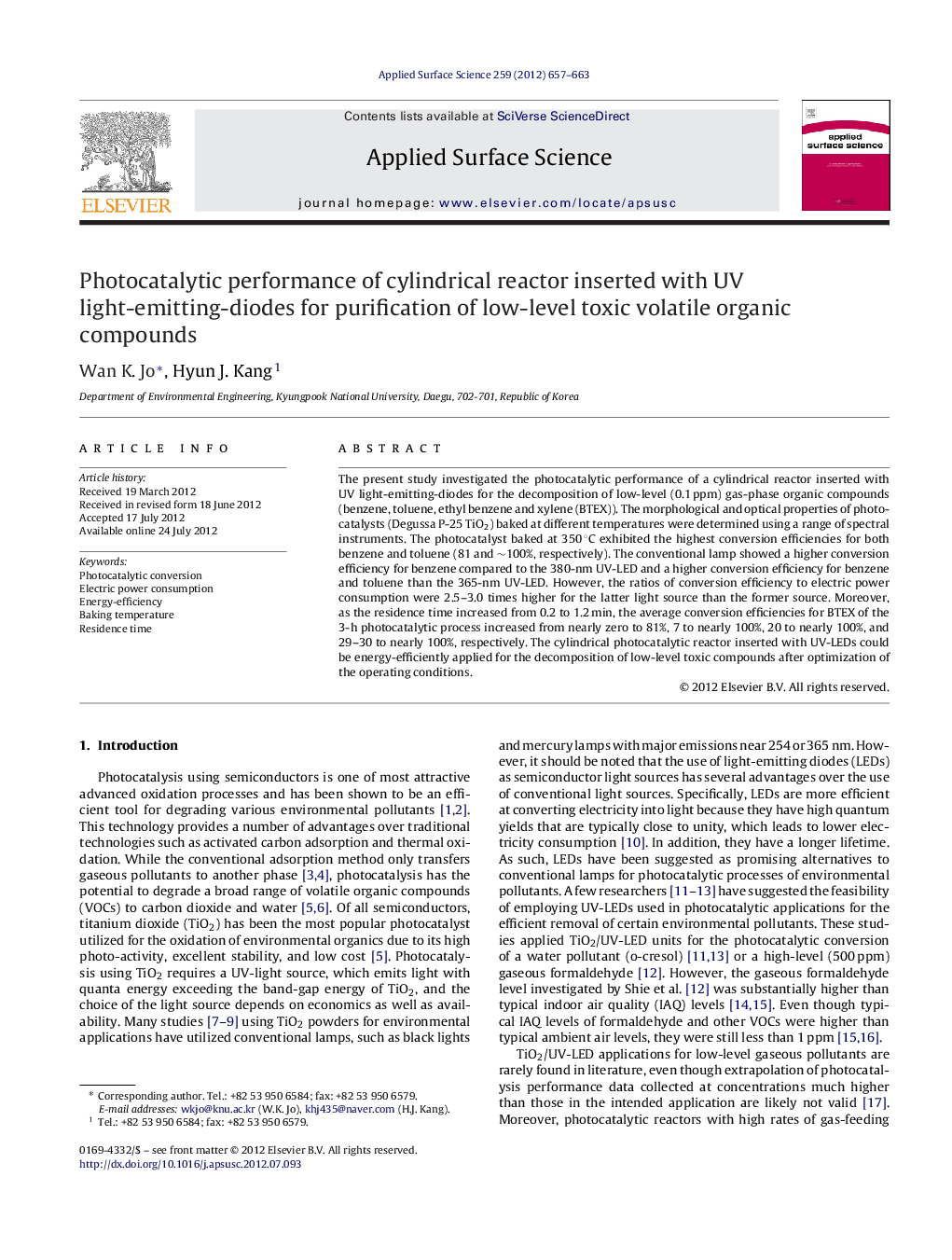| کد مقاله | کد نشریه | سال انتشار | مقاله انگلیسی | نسخه تمام متن |
|---|---|---|---|---|
| 5361514 | 1503704 | 2012 | 7 صفحه PDF | دانلود رایگان |

The present study investigated the photocatalytic performance of a cylindrical reactor inserted with UV light-emitting-diodes for the decomposition of low-level (0.1 ppm) gas-phase organic compounds (benzene, toluene, ethyl benzene and xylene (BTEX)). The morphological and optical properties of photocatalysts (Degussa P-25 TiO2) baked at different temperatures were determined using a range of spectral instruments. The photocatalyst baked at 350 °C exhibited the highest conversion efficiencies for both benzene and toluene (81 and â¼100%, respectively). The conventional lamp showed a higher conversion efficiency for benzene compared to the 380-nm UV-LED and a higher conversion efficiency for benzene and toluene than the 365-nm UV-LED. However, the ratios of conversion efficiency to electric power consumption were 2.5-3.0 times higher for the latter light source than the former source. Moreover, as the residence time increased from 0.2 to 1.2 min, the average conversion efficiencies for BTEX of the 3-h photocatalytic process increased from nearly zero to 81%, 7 to nearly 100%, 20 to nearly 100%, and 29-30 to nearly 100%, respectively. The cylindrical photocatalytic reactor inserted with UV-LEDs could be energy-efficiently applied for the decomposition of low-level toxic compounds after optimization of the operating conditions.
⺠Photocatalyst baked at 350 °C exhibited the highest BTEX degradation efficiency. ⺠Conventional lamp evidenced a higher degradation efficiency compared to LEDs. ⺠LEDs was more energy-efficient than conventional lamp for BTEX degradation. ⺠As the residence time increased, the average degradation efficiency increased.
Journal: Applied Surface Science - Volume 259, 15 October 2012, Pages 657-663